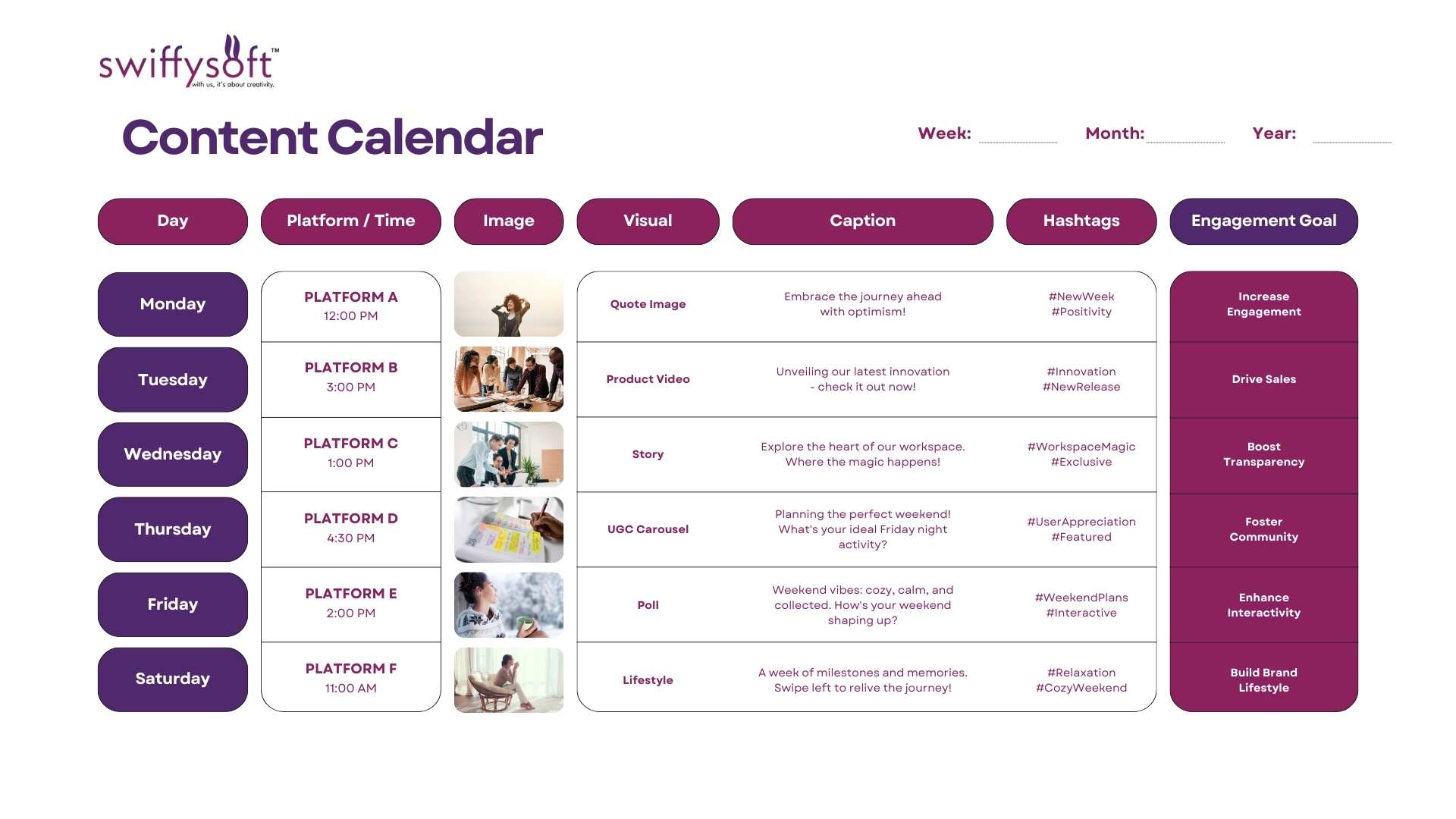
How to Create the Perfect Social Media Content Calendar for Your Business
reating the perfect social media content calendar for your business involves several key steps to ensure consistency, relevance, and engagement. Here's a comprehensive guide to help you get started
1. Define Your Goals and Audience
- Understand Your Objectives: Determine what you want to achieve through social media, whether it's brand awareness, lead generation, community engagement, or sales.
- Identify Your Target Audience: Define your ideal customer persona(s) to tailor your content effectively.
2. Choose the Right Platforms
- Know Your Platforms: Research which social media platforms your target audience frequents and focus your efforts on those platforms.
- Quality Over Quantity: It's better to excel on a couple of platforms than to spread yourself thin across many.
3. Conduct Content Research and Ideation
- Analyze Competitors: Study your competitors' social media presence to identify successful content strategies and areas for improvement.
- Brainstorm Content Ideas: Generate a list of content ideas that align with your brand, goals, and audience preferences.
4. Plan Your Content Calendar
- Set a Schedule: Determine how often you'll post on each platform (daily, weekly, etc.) based on platform algorithms and your audience's online behavior.
- Use a Content Calendar Tool: Choose a tool or platform (e.g., Google Sheets, Trello, or social media management tools like Buffer or Hootsuite) to plan and schedule your content.
- Include Variety: Incorporate a mix of content types, such as educational posts, behind-the-scenes content, user-generated content, and promotional material.
- Consider Seasonality and Trends: Plan content around relevant holidays, events, and industry trends to keep your content fresh and timely.
5. Create Engaging Content
- Visual Appeal: Use high-quality images, videos, and graphics to capture attention and convey your message effectively.
- Compelling Copy: Craft attention-grabbing headlines and captions that resonate with your audience and encourage engagement.
- Call to Action (CTA): Prompt your audience to take action, whether it's liking, commenting, sharing, or visiting your website.
- User-Generated Content (UGC): Incorporate content created by your customers or followers to foster a sense of community and authenticity.
6. Maintain Consistency
- Stick to Your Schedule: Consistency is key to building brand visibility and audience trust, so adhere to your content calendar as much as possible.
- Monitor and Adapt: Regularly review your content performance metrics (e.g., engagement, reach, conversions) to identify what's working and what needs adjustment.
7. Stay Flexible
- Be Agile: While having a content calendar provides structure, remain flexible to capitalize on real-time opportunities or address unforeseen events.
- Continuously Iterate: Use insights from analytics and feedback to refine your content strategy and calendar over time.
By following these steps and continually refining your approach based on audience feedback and performance metrics, you can create a social media content calendar that effectively supports your business objectives and resonates with your target audience.
